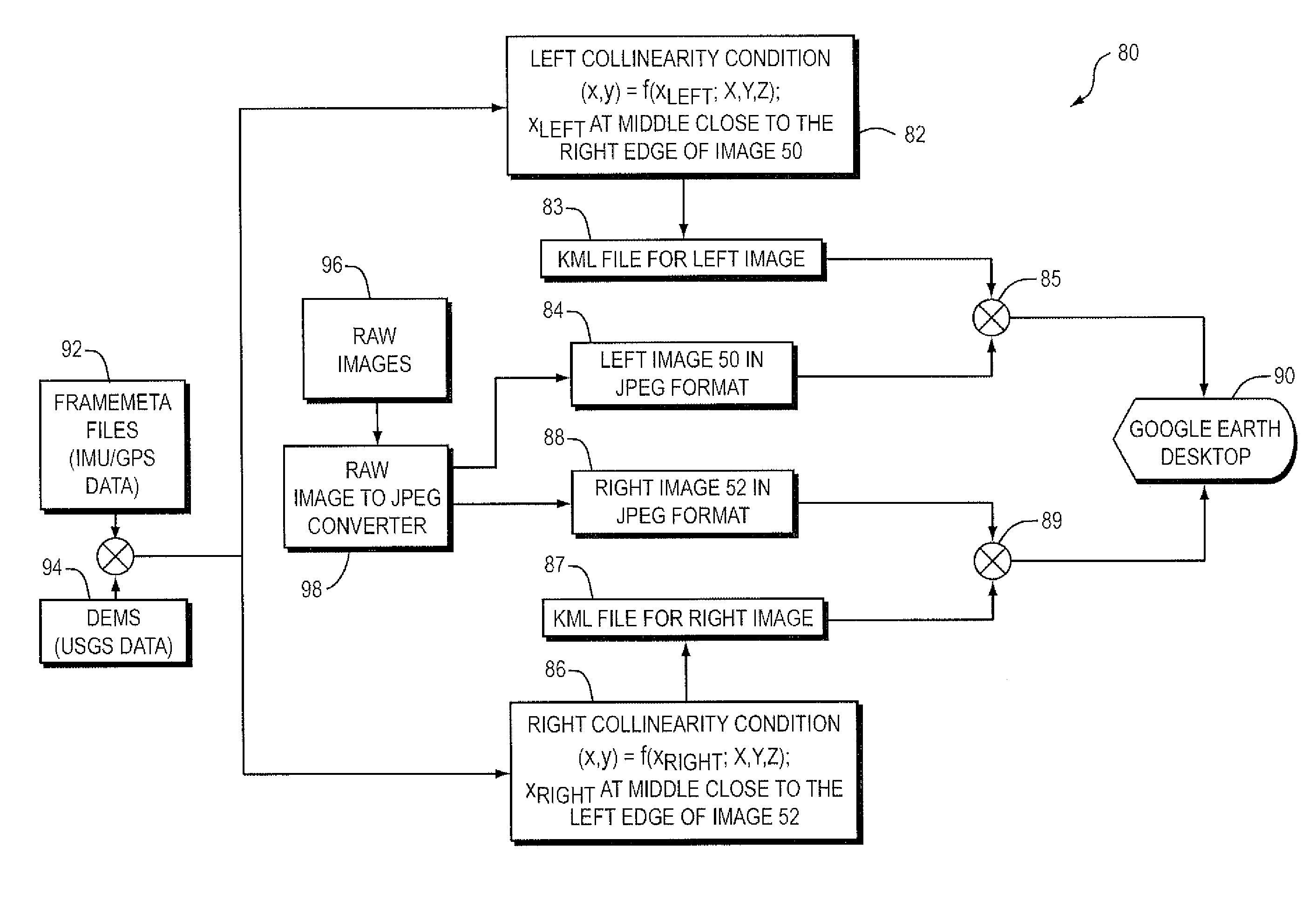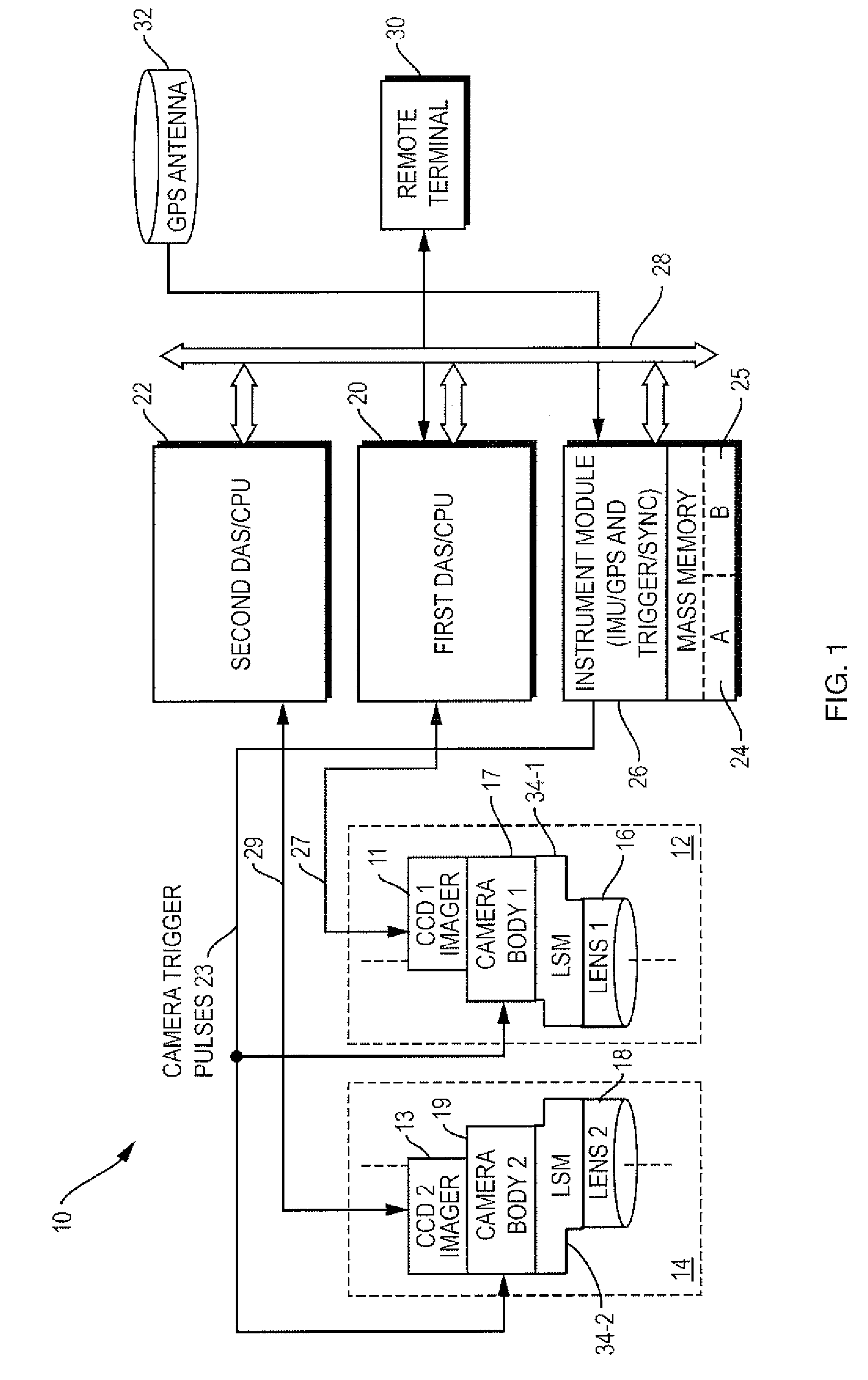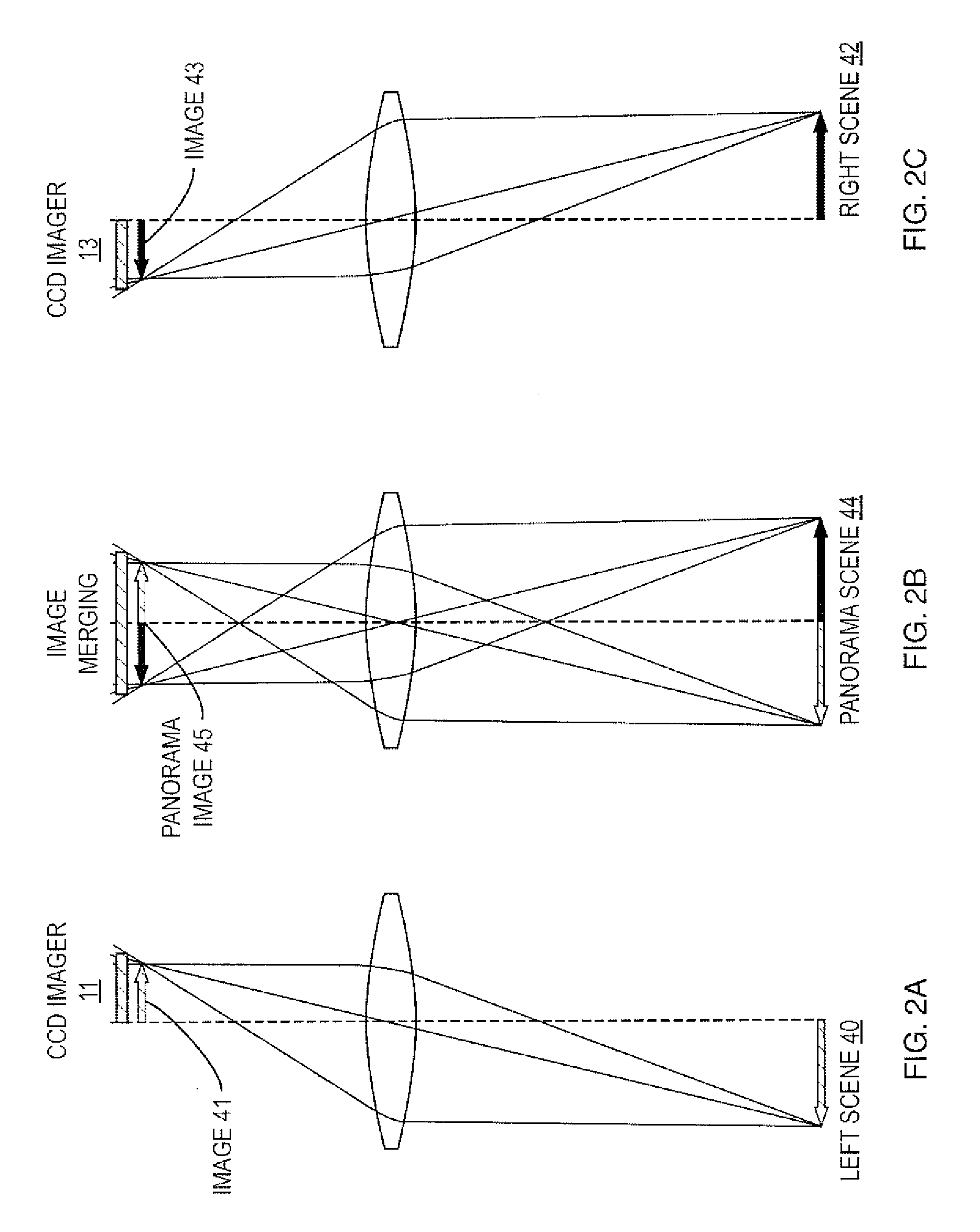Dual-Swath Imaging System
a dual-swath, electrooptical imaging technology, applied in the field of photogrammetric imaging systems, can solve the problems of introducing artifices, wasting precious image resources, and the size of the ccd and cmos area arrays currently available for use in such systems, and achieves the effect of easy processing and higher pixel coun
- Summary
- Abstract
- Description
- Claims
- Application Information
AI Technical Summary
Benefits of technology
Problems solved by technology
Method used
Image
Examples
Embodiment Construction
[0028]Referring to FIG. 1 a block diagram of a dual-swath electro-optical (EO) aerial imaging system 10 according to the present invention is shown comprising two cameras 12, 14 having two identical parallel mounted nadir pointing optical lenses 16, 18 with two identical CCD imagers 11, 13 mounted on a pair of specially configured camera bodies 17, 19. The camera bodies 17, 19 are attached to optical lenses 16, 18 with a pair of mechanical lens shift mounts (LSM) 34-1 and 34-2 which are mounted between camera 12 elements 16 and 17 and between camera 14 elements 18 and 19 with appropriate orientations to have the lens optical axes symmetrically shifted to left and right a predetermined distance to take dual images simultaneously (see FIGS. 2A and 2C).
[0029]Referring to FIG. 1, FIG. 6A, FIG. 6B and FIG. 6C, FIGS. 6A, 6B and 6C show the front, top and side views of a lens shift mount 34 which are used to symmetrically shift the twin lenses 16, 18 a predetermined offset to their origina...
PUM
 Login to View More
Login to View More Abstract
Description
Claims
Application Information
 Login to View More
Login to View More - R&D
- Intellectual Property
- Life Sciences
- Materials
- Tech Scout
- Unparalleled Data Quality
- Higher Quality Content
- 60% Fewer Hallucinations
Browse by: Latest US Patents, China's latest patents, Technical Efficacy Thesaurus, Application Domain, Technology Topic, Popular Technical Reports.
© 2025 PatSnap. All rights reserved.Legal|Privacy policy|Modern Slavery Act Transparency Statement|Sitemap|About US| Contact US: help@patsnap.com



